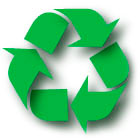Swish Environmental Actions
In 2007, Swish achieved ISO14001 Environmental Management Certification. As a result of this, Swish has improved its performance in terms of production efficiency and waste management. This in turn has led to significant reductions in energy inputs, water usage and scrappage rates during the manufacturing process.
In 2015, Swish achieved ISO50001 Energy Management Certification, a further demonstration of the company’s commitment to continuing environmental improvement. From this Swish has continued to monitor and reduce the site’s energy intensity, increasing efficiency and looking for more sustainable solutions. Furthermore, improvements in our transport efficiency have led to better levels of service and reductions in fossil fuel usage and carbon emissions.
2024 Report
Swish Building Products is an industry leader in the efficient production of cellular PVCue and PVCu products. We recognise that it is becoming increasingly important to use our material and energy resources more efficiently, effectively and with greater regard to the environmental effects that flow from their use.
The Swish Resource Use Policy sets out the company’s commitment to reducing and refining its use of resources based on the principles of Vinyl Plus, the European PVC industry’s own commitment to meaningful environmental action over the period to 2030. An example of this is the increased usage of recycled post-consumer waste (PCW) in our rainwater products. The Epwin Group’s acquisition of Poly-Pure Ltd, in 2022, has allowed for greater access to this post-consumer waste. Swish has increased its usage of PCW by 67% from 2022 to 2023.
These represent the most obvious and effective actions that the company has taken in order to make meaningful reductions in resource use and develop strong, sustainable material solutions.
The Company's Environmental achievements up to 2023 and since 2008 look like this:
|
|
Elements |
2023 Actual |
Change since 2008 |
|
Direct Impacts Fixed (Production) |
Electricity, Gas, Heater Fuel |
-9.75% |
-69.41% |
|
Moving Impacts (Transportation) |
Transport Vehicle Fuel, LPG |
-7.62% |
-15.94% |
|
Combined Fixed and Moving |
|
-9.31% |
-65.01% |
|
Water |
Consumption of water |
-10.47% |
-72.56% |
|
Recycled Production & office waste |
Primarily cardboard, poly, paper, wood and metal. |
+21.54% |
+323.03% |
|
General waste |
Unsorted waste |
-17.83% |
-31.36% |
Resource Use and Waste Prevention
The following sets out the actions that Swish is taking to:
- Improve future resource use at end of life.
- and the measures that Swish takes to engage with its staff and supply chain to promote behavioural change and share best practices.
Future Resource Use
The Short to Medium Term -
The reductions in energy inputs, water usage and scrappage rates and increased recycled material usage referred to above represent the most obvious and effective actions that the company could take in the short to medium term in order to make meaningful reductions in resource use.
The Longer Term -
It is important to note the following facts about PVC in general and cellular PVC in particular.
- PVC can be recycled up to 7 times depending on the application, because the recycling process does not measurably decrease the chain length of PVC molecules.
- A study completed in 2020 on behalf of the European Commission, estimated the amount of construction/demolition waste to be around 374 million tonnes in 2016. Plastics waste accounted for less than 1% of this waste. The amount of PVC waste represents approximately half of the total plastic waste generated in construction. – Source European Commission – Circular Plastics Alliance – Plastics Europe.
Swish has looked at its options for reclaiming and reusing the installation waste element of PVCue and has identified the barriers to implementation that face the company and the industry:
- Volume – the volume of waste scrap available industry wide in an easily processable form is low and does not constitute a reliable waste stream in terms of predictable volumes.
- Human nature – Any successful method of scrap collection will have to be easy/convenient to use and be positioned close to the point where the scrap is generated. Experience in the window frame industry has pointed to the likelihood that a variety of plastic and other scrap will be included with any PVC offcuts such that processing costs are likely to be high.
- Material type – It is important that we only incorporate scrap from cellular PVCue products only.
- Cleaning – Swish possesses the capacity to regrind and recycle clean boards of a larger size. However, are not able to clean contaminated pieces of PVCue. Therefore, the preferred route to cleaning would be with an experienced collection and reprocessing partner, such as Poly-Pure Ltd.
- Transportation costs – When a process partner is involved in the equation the costs of transportation start to become a significant factor in the viability of any such scheme.
Staff Engagement
Swish believes that there is a virtuous circle which helps the company and its employees to drive waste and inefficiency out of the manufacturing system and allows the workforce to realise the benefits of that process in terms of bonuses against specific targets.
Swish therefore measures specific efficiency improvements as per the table below.
|
KPI |
Target Range 2023 |
Actual 2023 |
|
Customer Service |
97% to 99% |
99.31% |
|
Quality |
1000 to 800 PPM |
612 |
|
Scrap |
3% |
1.69% |
|
Pick efficiency |
45% to 49% |
46.9% |
|
Pick accuracy |
99.80% to 99.84 % |
99.82% |
|
Delivery litres/bundle |
0.2500 to 0.2300 |
0.2363 |
All of these measures are aimed at improving resource use by, for example reducing errors in the system that require reworking product or taking back and redelivering orders, with all the costs and squandering of resources that this involves.
